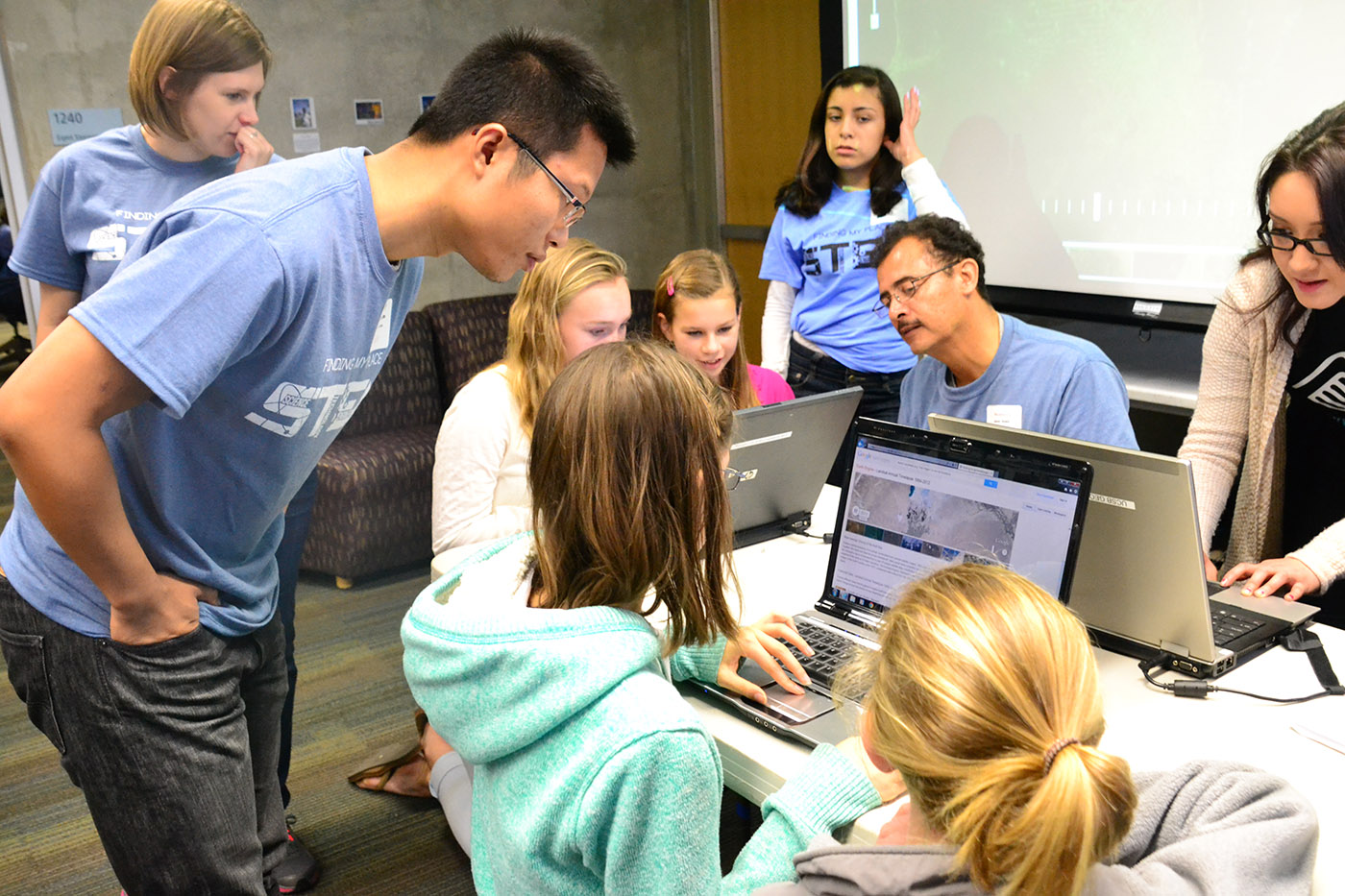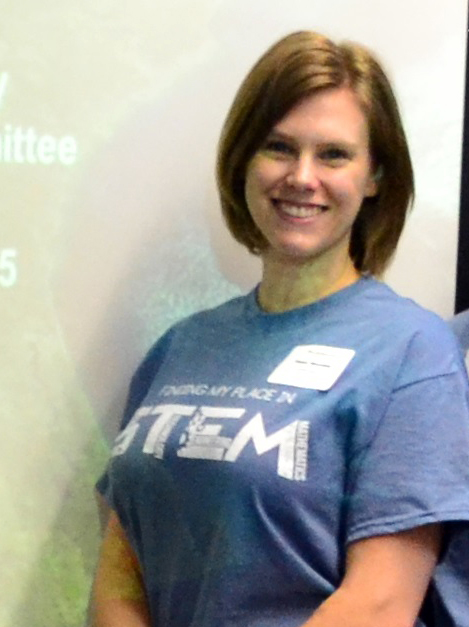The following article is by Geography graduate student Susan Meerdink:
“According to the National Girls Collaborative Project, elementary and secondary school girls are enrolling in math and science courses in increasing numbers. At the college level, however, gender disparities continue among female undergraduates. What’s more, the gap continues on the job front, with the National Science Foundation’s 2014 Science & Engineering Indicators suggesting that females remain underrepresented in careers in science, technology, engineering and math (STEM). A daylong conference at UC Santa Barbara sought to change that by giving girls in grades six through nine an opportunity to explore STEM education and related careers. Tech Savvy brings them together with female role models who are succeeding in these educational and professional fields. The conference consisted of hands-on workshops, including several focused on “savvy skills” — critical thinking, opinion sharing, public speaking, and knowledge about financial literacy, negotiation and interviewing — that girls can use throughout their lives” (excerpt from the article about it in The UCSB Current).
One of these workshops was created by Geography graduate students Alana Ayasse, Kitty Currier, Heather Berry, Bonnie Bounds, Erica Goto, and Susan Meerdink who represented the UCSB Department of Geography’s Visibility and Outreach committee. Geography students Mingquan Chen, Raul Garcia, and Javier Rubio from the UCSB American Society for Photogrammetry and Remote Sensing (ASPRS) Chapter provided additional help in running the workshop. The workshop titled “Satellite Imagery: Understanding the Earth through Time and Space” featured two stations. At the first station the participants used imagery to understand the Earth by piecing together aerial imagery from a kite and plane. The second station explored change through time using Landsat imagery which allowed them to witness the growth of urban Las Vegas, the shrinkage and growth of glaciers, and deforestation in the Amazon. The workshop emphasized the various areas of science that use satellite and aerial imagery and future careers that the participants could pursue.
“It’s a lot of fun to see all these students excited about science specifically about remote sensing”, said Susan, who helped lead and design the project. “Volunteers, parents, and young girls all enjoyed looking at the imagery and many were excited to try these activities at home. This was a great way to introduce young girls to careers in geography.”
The UCSB Current also notes: “Supported at UCSB by the Women’s Center and Women in Science and Engineering, Tech Savvy is a program of the American Association of University Women (AAUW). It began in 2006 at the University of Buffalo under the leadership of then-branch president Tamara Brown. Other supporters include local chapters of AAUW and Praxair. This year’s Tech Savvy is the second to take place at UCSB. It is among 15 such conferences in 2015 and is the only such event on the West Coast” (Ibid.).





